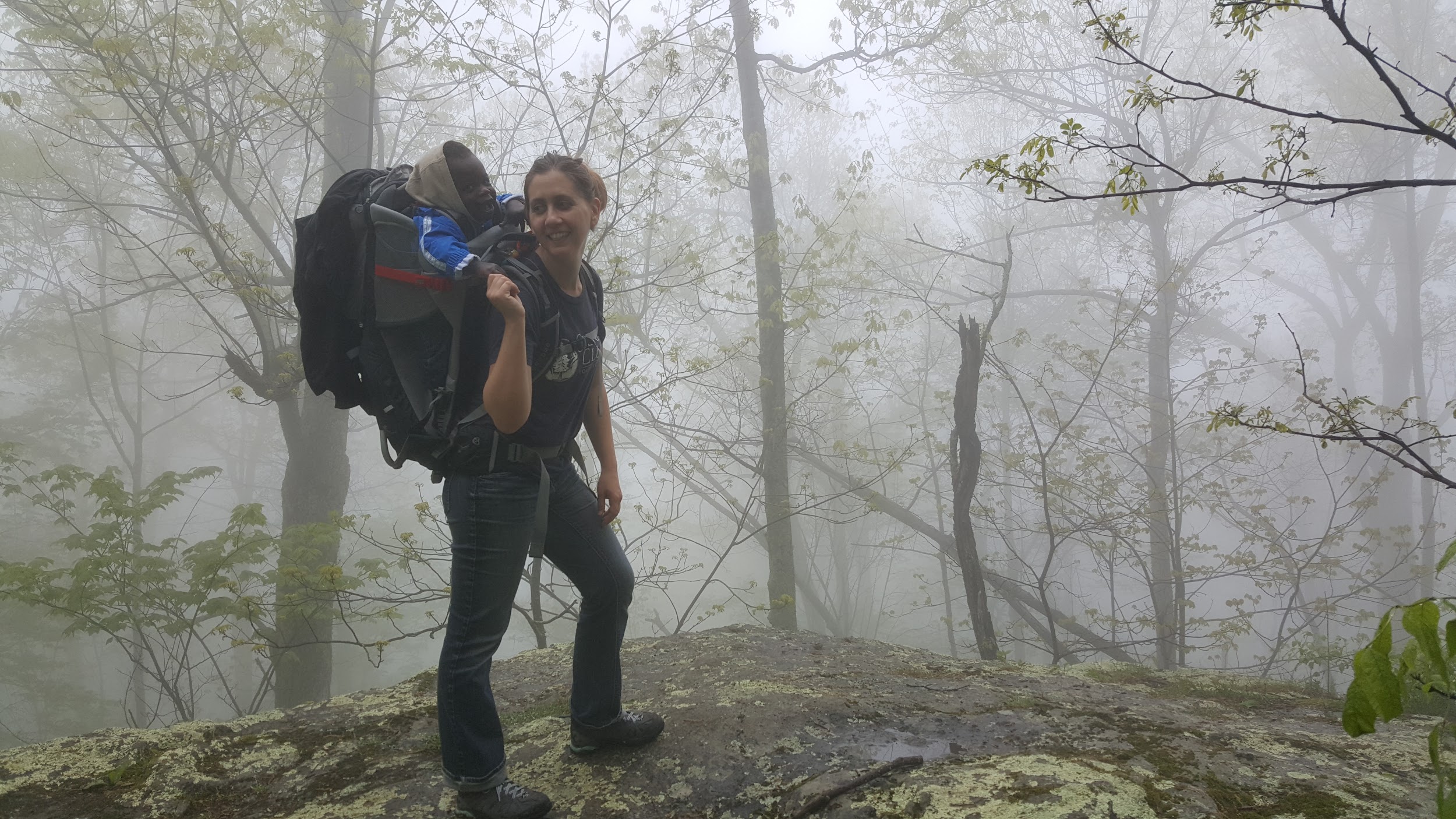Jackie and her son on a recent trip to Shenandoah National Park
The last time my family drove to Shenandoah National Park in Virginia, we were “welcomed” by confederate flags. I have seen these flags before. They weren’t in the park itself, but they lined the roads as we approached the park entrance station. For years, these proud displays of confederate flags have irked me. But this last trip was different. This time I had my one-and-a-half year old son in tow. The flags made me wonder whether or not my family was welcome in this part of the country.
Over the years, I have heard disheartening stories from friends and colleagues who have felt unwelcome in the outdoors. Some have shared with me their feelings of uneasiness as they visit a park where nobody, not the rangers nor the visitors, looks like them. Others have shared stories of direct aggressions both inside and outside of our parks. I’ve heard several instances of youth groups of color being reported to park police for simply talking a bit too loudly. And I’ve heard stories of young adults, usually black men, being pulled over and questioned by police just outside of a park for no apparent reason at all. These experiences add up. And they compound a history of exclusion and tension many communities have felt in the outdoors.
Last week, President Barack Obama issued a presidential memorandum promoting diversity and inclusion on our national parks, forests, and other public lands and waters. The memorandum’s purpose “is to ensure that all Americans have the opportunity to experience and enjoy our public lands and waters, that all segments of the population have the chance to engage in decisions about how our lands and waters are managed, and that our Federal workforce -- not just the sites it manages -- is drawn from the rich range of the diversity in our Nation.” The memorandum is the first direct call to action from a sitting President to address diversity and inclusion in the great outdoors and is an important milestone in the journey to realize a more equitable and inclusive vision for America’s parks and public lands.
In addition to the presidential memorandum, last week President Obama established the Reconstruction Era, Freedom Riders and Birmingham Civil Rights National Monuments, commemorating an important chapter in American history. These new sites add to a long list of historical and cultural monuments named over the last several years, including Harriet Tubman, Cesar Chavez, Honouliuli, Stonewall, Sewall-Belmont House and Pullman, each of which helps tell a more inclusive history of America.
But rarely does progress happen by chance. The movement to ensure that our parks and public lands welcome, include and celebrate America’s rich, diverse and, at times painful history, has gained momentum over the last several years. President Obama did not create this movement, but he has received it well. Starting with his America’s Great Outdoors initiative, the Obama administration hosted listening sessions in communities across the country to better understand a variety of perspectives and experiences. The administration took what it heard, and helped to change the narrative about our parks and public lands.
Out of those early listening sessions, several efforts emerged to ensure that children and youth, particularly those with limited opportunities, were able to experience and learn in our national parks, forests and public lands and waters. Starting with Let’s Move! Outside, First Lady Michelle Obama invited children into the great outdoors, what she called “America’s first and best playground.” The outdoors is now a solution to solving the childhood obesity epidemic. Next, the administration expanded conservation corps career pathway opportunities for youth and young veterans to gain valuable job skills protecting our public lands, a program that had been previously supported by both Bill Clinton and George W. Bush. And more recently, President Obama established the Every Kid in a Park initiative to increase participation in the outdoors by granting free access to federal lands and waters for fourth graders and their families. The free entry park pass has been accepted by several state park systems, including Indiana’s state parks.
Last week’s presidential memorandum is one more piece in the puzzle to realize a more inclusive vision for America’s parks and public lands. But we are not there yet. Given the divisive rhetoric that plagued the president-elect’s campaign and his deafening silence regarding racial tensions in America since the election, it is unclear whether or not the next administration will value this critical equity and inclusion work.
America is rich and beautiful in its diversity of people, cultures and places. It is unique in its network of protected public lands and waters which are the envy of the world. However, there is still a long way to go to ensure that everyone feels at home in America’s great outdoors. Groups like the Next 100 Coalition have helped elevate this important dialogue and call for action. The Sierra Club will be there every step of the way to ensure efforts to advance equity, inclusion and justice in the outdoors continue. We join in solidarity with all who are working to ensure our public lands welcome, value and reflect all people and all communities.
